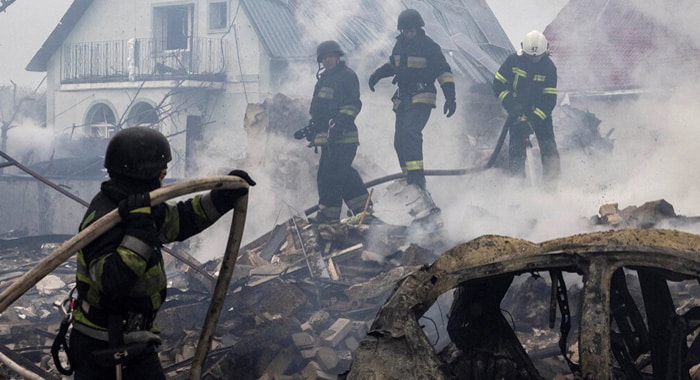Russia launched its most intense aerial assault on Ukraine since the start of the full-scale invasion, killing 12 civilians—including three children—and injuring dozens more, Ukrainian authorities said, even as Kyiv and Moscow finalized the largest prisoner exchange of the war.
In what Ukraine’s Air Force described as an “unprecedented wave” of attacks, Russia fired 45 missiles and launched 298 drones overnight—266 of which were Iranian-made Shahed attack drones. Ukrainian forces shot down the majority, but the scale of destruction and loss of life marked one of the deadliest single nights in recent months.
Emergency services described the barrage as a night of “terror.” In Zhytomyr region, a missile strike killed three schoolchildren, aged 8, 12, and 17. The victims—identified by their school as Roman, Tamara, and Stanislav—were mourned in a heartbreaking tribute: “Their memory will always be with us. We will never forgive.”
Additional fatalities were confirmed in Khmelnytskyi, Mykolaiv, and Kyiv regions. Four people were killed in both Khmelnytskyi and the outskirts of Kyiv, while 16 others—including three children—were injured in the Kyiv region alone. In the village of Markhalivka near the capital, entire streets were engulfed in flames. “We saw the whole street was on fire,” said 65-year-old Tetiana Iankovska, a retired resident.
President Volodymyr Zelensky condemned the renewed onslaught, calling for decisive international action. “Without truly strong pressure on the Russian leadership, this brutality cannot be stopped,” he said. “The silence of America, the silence of others around the world only encourages Putin. Sanctions will certainly help.”
The European Union’s foreign policy chief, Kaja Kallas, echoed the urgency. “Last night’s attacks again show Russia bent on more suffering and the annihilation of Ukraine. Devastating to see children among innocent victims harmed and killed,” she stated.
Despite the carnage, Sunday also marked a rare moment of progress: the largest prisoner swap between the two countries since Russia’s invasion in February 2022. Under a deal brokered in Istanbul on May 16, Ukraine and Russia exchanged a total of 1,000 captives—303 prisoners on each side in the final phase—bringing home hundreds of soldiers and civilians.
Russia claimed its strikes targeted Ukraine’s military-industrial sites and alleged it had downed 110 Ukrainian drones. But for many in Ukraine, the devastation tells a different story. “We don’t need talks, but weapons, a lot of weapons to stop them,” said 64-year-old Oleskandr, another survivor. “Because Russia understands only force, nothing else.”
The night’s attack, both in scale and symbolism, underlined the fragile line between war’s brutality and diplomacy’s fleeting breakthroughs.





